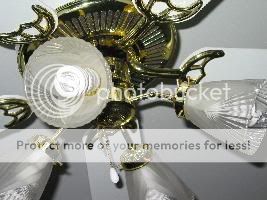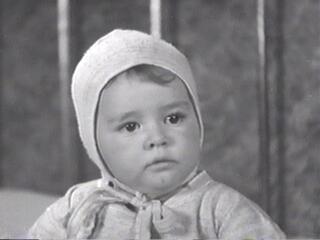
WILL CHANGING OUT ALL LIGHTBULBS IN MY HOUSE TO CF MAKE A DIFFERENCE?
According the FTC.gov website for lightbulbs 90% of the electricity used by standard incandescent lightbulbs is lost as heat. Standard light bulbs (incandescent) burn about 750-2000 hours whereas compact fluorescent (CF) bulbs tend to burn about 10000 hours - i.e. 10 times longer than standard bulbs. The light output of a 60Watt regular incandescent bulb yields about 855lumens; a 15Watt CF bulb yields about 900 lumens (brighter at 1/4 the watts used). The upshot: "The benefits of compact fluorescent bulbs are clear: lower operating costs, longer operating life and more efficient use of energy." The ftc website estimates that a 15W CF bulb would cost you $1.20/year to operate versus $4.80/year for a standard bulb when you factor in the cost of electricity. The downsides of the CF bulbs: 1. the expense (they can be very expensive especially compared to the cheap standard bulbs) 2. CF bulbs contain a trace of mercury (Hg), so special disposal is recommended - take to hazardous waste disposal sites in your town/county 3.CF bulbs have a slight "delay to full brightness" effect, though much less than standard fluorescents (those long tubes used in most schools and offices) 4.Some CF bulbs have a tendency to buzz slightly - usually defective ones.
With the summer coming on, I was thinking that replacing all the incandescent bulbs with CF bulbs may also reduce the amount of heat generated within a room, especially if enclosed, and also reduce the fire hazard of hot burning bulbs. It might even potentially reduce the air-conditioner usage (?!) by not generating additional heat in the house? Who knows. I had always tried a few CF bulbs in various fixtures, and I always used CF bulbs to light aquariums with plants and I found these CF bulbs lasted years and years - decades in fact, though the light output would very gradually diminish over time. While perusing various lighting websites, I came upon a Kansas store called lightbulbs etc. or lightbulbs direct and found a decent deal for mini-spiral 60watt bulbs - $11.98 for 4. I impulsively decided to go for the gusto and buy a CF bulb for every damn fixture in my house. It turns out that lightbulbsdirect.com did not have a good deal for candelabra bulbs (as compared to my local hardware store I'm saying), but I went ahead and purchased all of them from this one store http://lightbulbsdirect.com/. It took a good 10 days for them to deliver the bulbs and the shipping charges were fairly high. My total cost for all the bulbs were $361.30 to replace every damn bulb in my house.
Here's how the bulbs came:

And here's a comparison of a mini-spiral 4Watt next to a 60W standard bulb, and a "torpedo" candelabra base 4Watt CF bulb next to a standard 25W candelabra base bulb:

Another thing I worried about was that for some of the decorative fixtures in the house, the CF bulbs might ruin the "decorative" aspects of the lighting. I think overall you tend not to notice it unless you are really watching for it. Here are two examples. One is a ceiling fan light, another is a candelabra fixture, both with the CF bulbs installed on them:


Though I ordered about 75 CF bulbs total, I found only 1 defective light bulb in the whole lot. And only that one defective one "sang" with the rumored buzzing before burning out within a month. I'd say a decent quality control overall for generic CF bulbs.
Here's how the costs sorted out for my house. Using lightbulbdirect.com's own prices (to be fair in comparison), though I think prices can be higher for both standard and CF bulbs at my local home depot or Lowe's, I found:
Standard Incandescent set-up:
60watt bulbs - 31 bulbs x $.30 = $9.30
25watt candelabras - 31 x .47 = $14.57
100watt 3yr bulbs - 4 x 1.85 = $7.40
40watt Globe bulbs - 4 x 1.05 =$4.20
25watt miniGlobes - 2 x .79 = $1.58
150watt floodlight - 1 x 3.49 = $3.49
50/150/250w 3way bulb - 1x2.99 = $2.99
50/75/150w 3way bulb -1x1.79 = $1.79
75watt bulbs - 3 x .30 = $0.90
40watt bulbs - 1 x .30 = $0.30
total wattage: 3885watts total cost of these bulbs: $46.52
Whole-House Compact Fluorescent set-up:
Like I said, I spent $361.30 including shipping for 48 mini-spiral 15watt bulbs, 24 mini-torpedo candelabra 4watt bulbs, and 1 75watt reflector bulb. Total wattage as installed in the house: 879watts total. So the immediate painful drawback is in spending an extra $314.78 which included a bunch of shipping and handling charges. The immediate payoff is in a brighter house overall and in the knowledge that I am using 3006 fewer watts potentially throughout the house.
Fortunately, my electric company (Progress Energy) allows me to follow my usage and billing history online. This will help me better judge in real time the difference in my kilowatt-hour per month from when I was all incandescent to now that I am all compact-fluorescent. This comparison is complicated by the fact that until this past December or so, I and my family were spendthrifts not only in terms of eating out and recreational shopping, but also in how we used electricity for air-conditioning, lighting, etc. Since we made a concerted effort to be more frugal and simple, we've been trying to reduce our lighting, we've been shutting off the oven or stove a couple minutes before cooking is "complete," we've gone out and taped extra insulation around our outdoor air-conditioning unit's tubing and our indoor water-heater tubing, we've dialed up our AC thermostat from our previous 72-75F to our current 81F (and plan to dial down our winter heating thermostat from our previous 75F to about 65-68F), we've been dialing our dishwasher to rinse in cold water, we've been trying to take lukewarm to room-temperature showers instead of hot showers, we've set our hot-water heater to heat at 122F. All these efforts have made a notice-able difference in our KWH usage, but has made a smaller difference in our monthly charges due to the rising cost of electricity in the past year. So as you can see, the comparisons are going to take some fine discerning and counter-compensating.
In any case here are the raw data for a 4 month period last year (when we were all incandescent and all spend-thrift), versus a 4 month period this year (when we are all-CF and more frugal):
We were Spendthrifts, We were Incandescent:
Month ..KWH/month usage..electricity bill..avg climatic temp
April 2003........1794...........$144.30......53F
May 2003..........1843...........$148.03......58F
June 2003.........2065...........$165.05......66F
July 2003.........1912...........$173.03......74F
We are Frugal, We are Compact-Fluorescent:
April 2004........991............$83.36......52F
May 2004..........936............$79.11......61F
June 2004.........1515...........$123.75.....74F
July 2004.........1526...........$140.32.....76F
These comparisons will need to be charted out for the next year and I'll have to come up with some reasonable way to factor out our additional frugality measures and also to factor in the rising cost of electricity along with temperature patterns (this is actually done for me by Progress Energy on their website). I think I see real savings in the utility bill already but it'll take a few more months of comparing and figuring/factoring to determine a ballpark "percentage figure" of savings per month, per year, and per life of CF bulb.
Hey, this is just one of the "frugality measures" I'm trying out - whether it turns out to be a failure or not, I don't know. Some frugality measures don't really give you a good bang for the buck. My wife and I have always calculated gas mileage whenever we fill-up our cars by dividing our odometer reading since last fill-up by the total gasoline filled(used). I've found that I can add about 2 miles-per-gallon to my usual weekly work commute by NOT using any air-conditioning during the drive - actually a borderline trivial difference in terms of cost even with gasoline in our area at about $1.919/gallon, especially considering the sweaty misery you pay for in exchange for the higher gas mileage.
The loose ends to this story is this:

That is, what do I do with the 74 standard incandescent light-bulbs I have left after changing out all the lighting in the house? Here are some possibilities: 1.Try selling them at the next yardsale (?who would buy used bulbs? How to price them?) 2.donate them (?who would accept used bulbs in donation? How much should I deduct for tax purposes?) 3.keep them around to use as emergency replacements 4.Use them to stop traffic (Spanky did this on one of those old 1930s "Our Gang" movies - here's how it works: you throw down a light bulb and it makes a popping sound and makes everyone on the road stop and get out to see if their tires popped - problem is modern tires don't pop that easily and modern drivers couldn't hear such outside noise in their hermetically sealed driving environments).

which makes me wonder why those old Little Rascals comedy shorts are no longer to be found anywhere on TV. I was thinking that the politically-correct-police made all networks forego airing those episodes, just as theatres and video outlets no longer will show Disney's Song of the South, or many of those old Looney Tunes cartoons, or the old 1940s Superman cartoons, or any more Benny Hill masterpieces etc. A great loss for us all.











